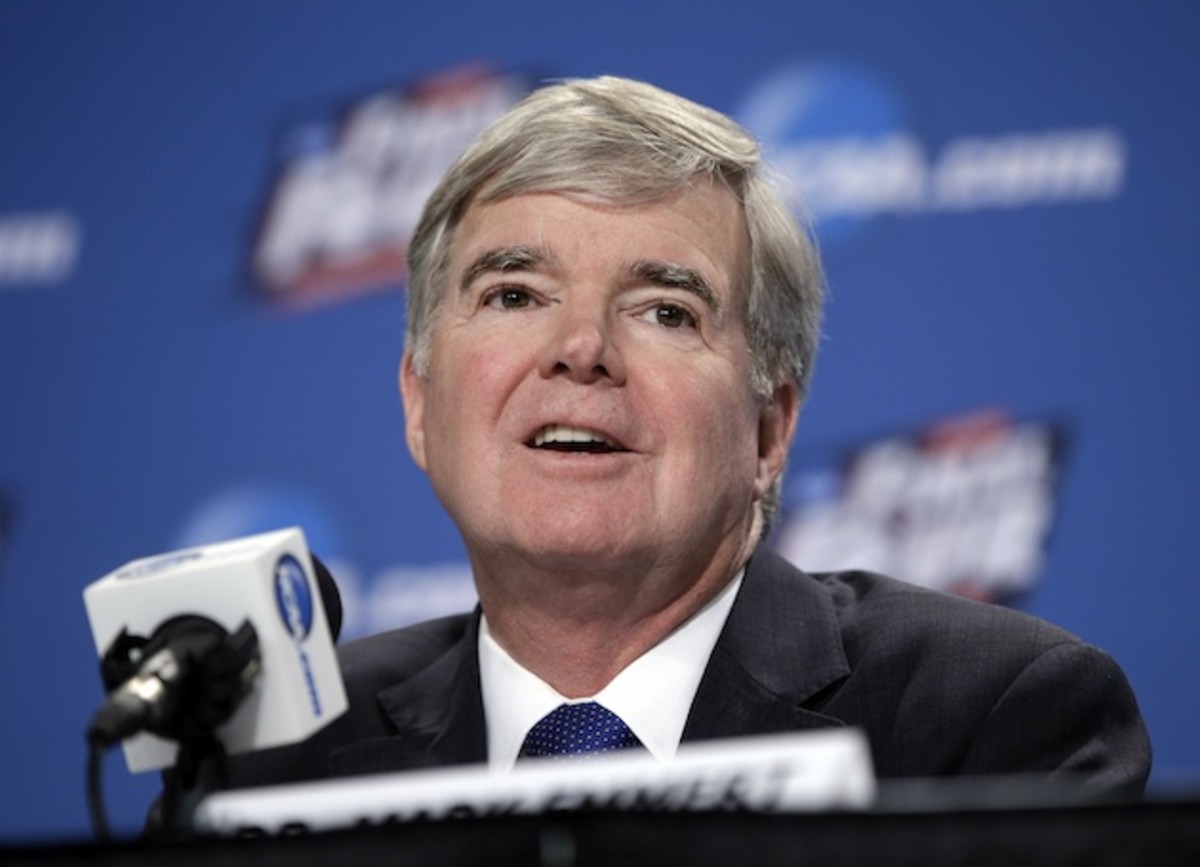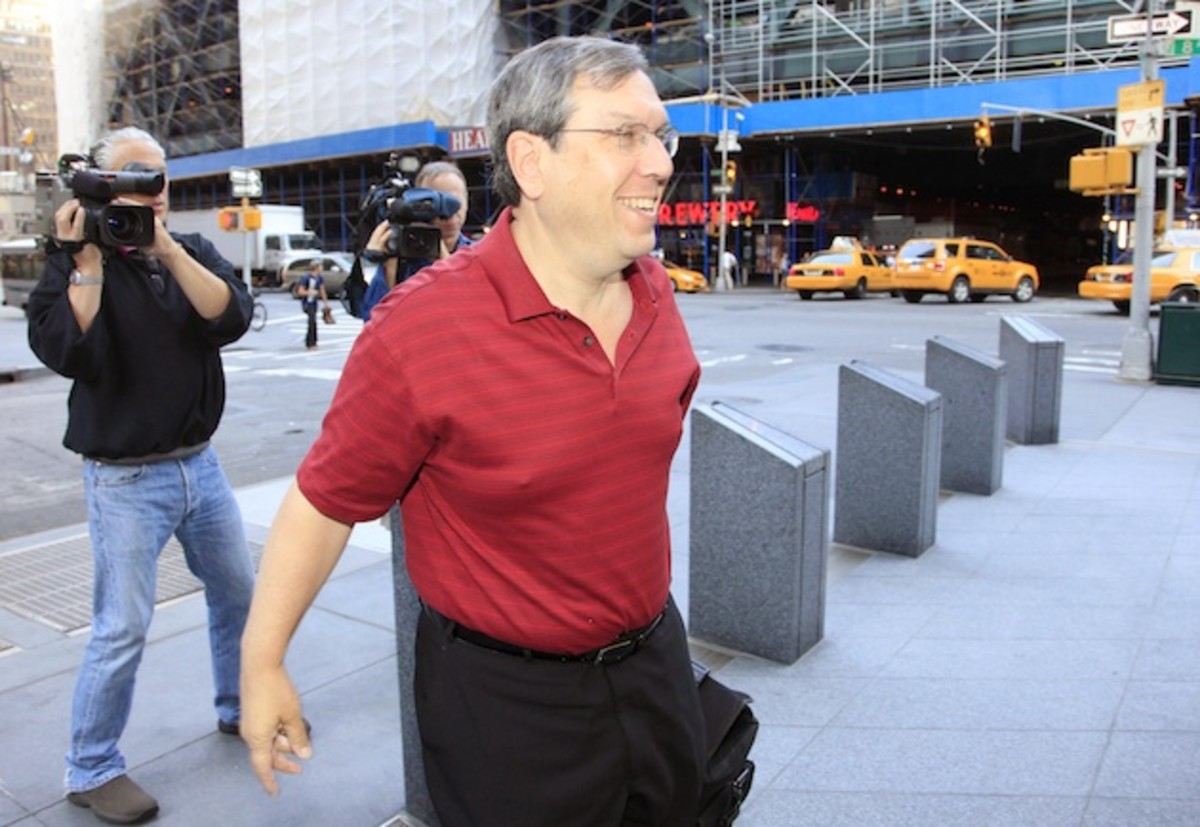O'Bannon ruling allows 'amateurism' argument to continue—for now

In considering whether to pronounce NCAA amateurism dead as we know it, the Ninth Circuit Court of Appeals — tasked with hearing the O’Bannon vs. NCAA federal antitrust case — needed to weigh in on one question above all: If the athletes were paid, would that stop people from watching college sports?
On Wednesday, the NCAA got the ruling they wanted. Sort of.
The decision, which partially upheld a 2014 ruling by District Judge Claudia Wilken, was made after a three-judge panel heard testimony from sports management expert Daniel Rascher. Rascher argued that, despite opinion surveys several decades ago that showed opposition to allowing professional athletes to compete in the Olympics, the public kept watching the Games at the same rate.
What the appeals court ruling means for O'Bannon's ongoing NCAA lawsuit
The court wasn’t buying that comparison. “The Olympics,” the majority decision reads, “have not been nearly as transformed by the introduction of professionalism as college sports would be.”
How the judges can claim to know this — an extreme hypothetical if ever there was one — is anyone’s guess. In 1960, a member of the International Olympic Committee told Sports Illustrated that, without amateurism, the Olympics would “be destroyed within eight years.” In reality, the Olympic transition away from amateurism was as seamless as anyone could’ve reasonably hoped for.
But that type of fear-mongering — speculative, cynical, based on nothing more than mere conjecture — is precisely what the NCAA is continuing to bank on.
In an effort to demonstrate that paying college athletes would cause an immediate cultural apocalypse, the NCAA presented a survey asking fans whether they’d be more or less likely to watch college sports if athletes received pay above certain thresholds. The conclusion: “38 percent of respondents are less likely to watch or attend games if athletes are paid $20,000; 47 percent if athletes are paid $50,000; and 53 percent if athletes are paid $200,000.”
Of course, the question could have easily been framed much differently. After all, the NCAA wasn’t asking whether college athletes should be compensated for use of their names, images and likenesses (NILs), the issue at the heart of the O’Bannon case. And the survey didn’t bother to offer any nuance as to how athletes could be paid — say by simply shifting money away from coaches’ salaries and athletic department spending, at no cost to consumers.

Curiously, the plaintiffs opted not to counter the NCAA’s study with one of their own, a decision which, according to several antitrust experts, may have been their undoing.
“The fundamental error was that they failed to produce a rebuttal study,” said Marc Edelman, an associate professor of law at Baruch College’s Zicklin School of Business. “Had such a study been produced, it would have been a lot more difficult for the Ninth Circuit to curtail the [district] court’s ruling.”
Which brings us to the specifics of the ruling itself. In its ruling, the court confirmed the part of Judge Wilken’s decision which states the NCAA must be subject to scrutiny under the Sherman Antitrust Act’s Rule of Reason — that by restricting athlete compensation up to the full cost of attendance, the NCAA is in violation of antitrust law.
“The statement that the NCAA is not the arbiter of amateurism is critical to this case, and that is where the student-athlete plaintiffs can claim victory,” said Thomas Baker, an associate professor of sport law in the sport management program at the University of Georgia. “Until today, 40-plus years of case law stated that we will not even apply antitrust law to regulations involving student-athletes.”
• MORE: Northwestern moving on after union movement
At the same time, the court reversed Judge Wilken’s ruling that college athletes could receive up to $5,000 per year in deferred payments for the use of NILs. Essentially, the court drew a very distinct line in the sand: Payment for athletes up to the full cost of attendance would not be anti-competitive; anything more, however, would sully the sanctity of amateurism.
The decision reads: “[I]n finding that paying students cash compensation would promote amateurism as effectively as not paying them, the district court ignored that not paying student-athletes is precisely what makes them amateurs.”
The catch-22 is as glaring as it is curious: Amateurism is only as important (nay exists) insofar as the NCAA says it is (and does). The bedrock of amateurism, in the NCAA’s own words, is “preserving an academic environment in which acquiring a quality education is the first priority.”
We all know this is a farce, of course; many student-athletes, at least in high-profile football and men’s basketball programs, are athletes first and students second. It’s been proven time and time again, through academic scandal after academic scandal. Amateurism, then, is the ultimate red herring — a distraction from the fact that big-time college sports is a gargantuan industry, and that its prime employees aren’t afforded so much as a crust crumb of the pie.
To his credit, one of the three Ninth Circuit judges, Sidney R. Thomas, seemed sympathetic to this fact, defending Wilkens’ $5,000 proposal in what amounted to a partial dissent.
“Division I schools have spent $5 billion on athletic facilities over the past 15 years. The NCAA sold the television rights to broadcast the NCAA men’s basketball championship for 12 years to CBS for $10.8 billion dollars,” Judge Thomas wrote. “The NCAA insists that this multi-billion dollar industry would be lost if the teenagers and young adults who play for these college teams earn one dollar above their cost of school attendance. That is a difficult argument to swallow.
Larry Brown lucky to keep job after NCAA comes down hard on SMU
Reading between the lines, it seems Judge Thomas is just about ready to change the system. And yet, by and large, America’s courts continue to accept amateurism as a necessary prerequisite to the existence of college sports. The NCAA is so powerful, its product so deeply embedded in our national culture, that no one is willing to deliver that one knockout blow.
Baker, meanwhile, offered a stark analogy to explain the courts’ hesitancy.
“We can agree there’s this horrible, terrible person who we think deserves to die,” Baker said. “But do you want to pull the lever on the electric chair? Do I want to pull the lever on the electric chair?”
As public opinion on the NCAA continues to shift, changes are happening in baby steps. The O’Bannon ruling (which either side could still pursue an appeal through an en banc review or, failing that, to the Supreme Court) changes almost nothing in the short term, with most schools having already implemented steps to pay athletes the full cost of attendance.

“It certainly can be called a small step forward in the battle to overturn the NCAA principle of amateurism,” Edelman said. “But this is not a huge step forward in any which way.”
Nonetheless, the O’Bannon ruling may serve to open the door yet another crack for the next lawyer — in this case, Jeffrey Kessler, who represented Tom Brady in the Deflategate case. Kessler attended a class certification hearing on Thursday for a lawsuit against the NCAA, seeking a free market for the services of college football and men’s basketball players.
That may sound like a quantum legal leap, especially considering the Ninth Circuit’s assertion that any payment above the cost of attendance would be DOA. But if Kessler can achieve what the O’Bannon plaintiffs could not — produce a comprehensive (and compelling) consumer-demand study showing that fans will in fact continue watching college sports regardless of whether the players are paid — then he might have a shot.
“We’ve kicked the can down the road with this decision, but in a way that made the can bigger for student-athletes,” Baker said. “How long can we keep going with this concept of amateurism? I would phrase it as, ‘How long can we keep pretending?’ The answer is a little while longer.”

